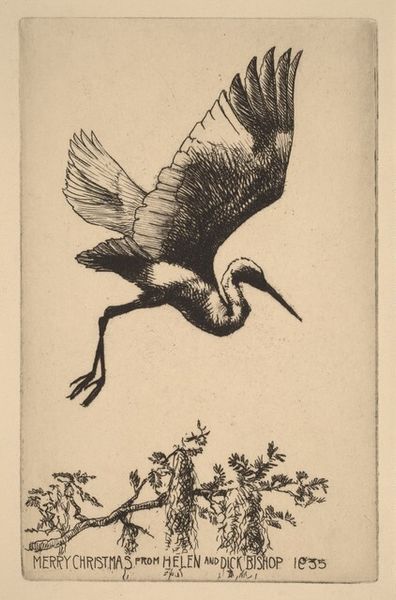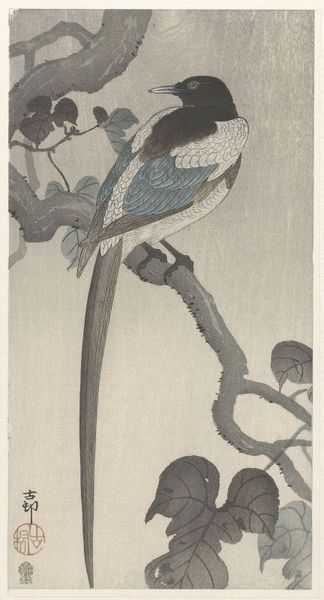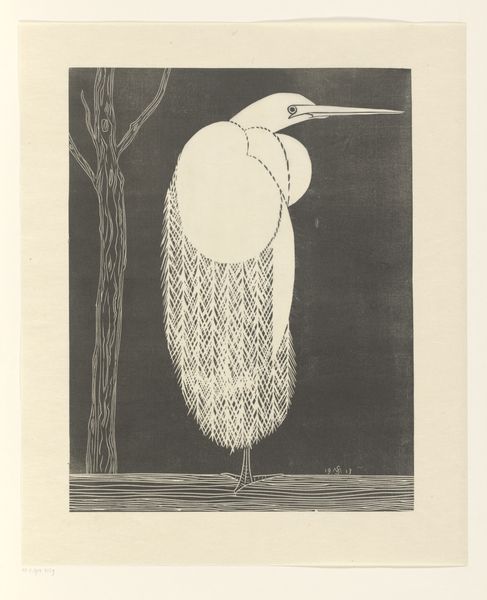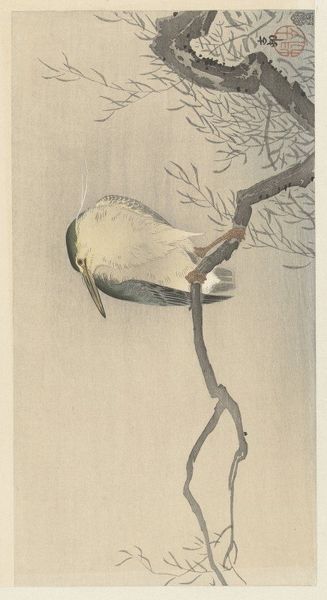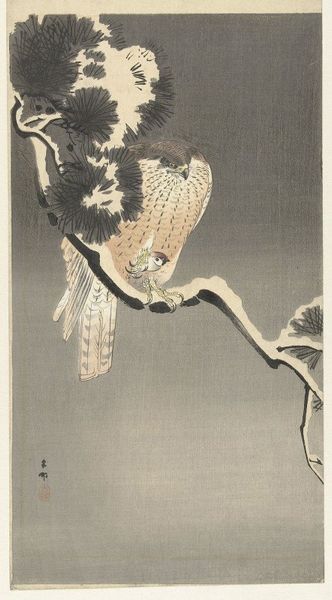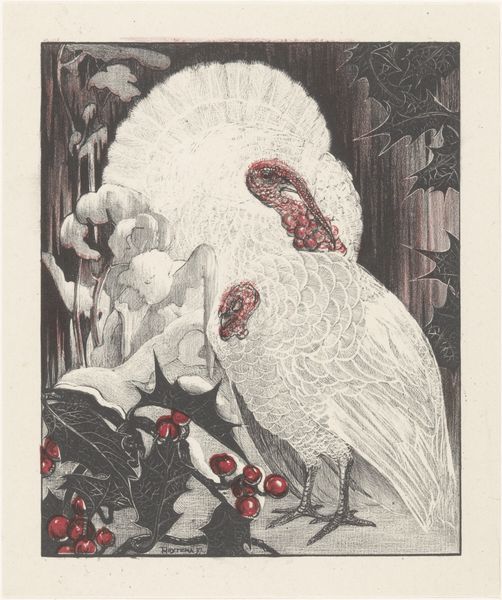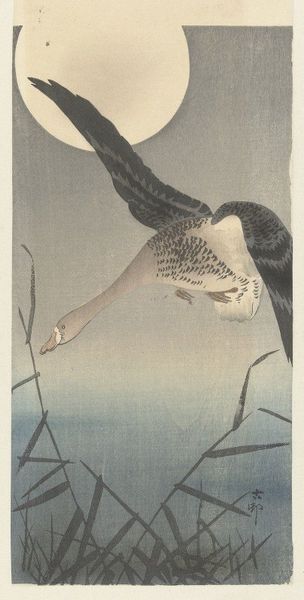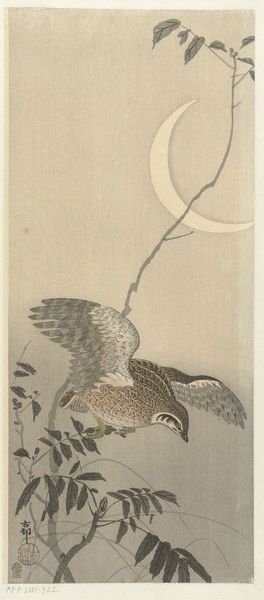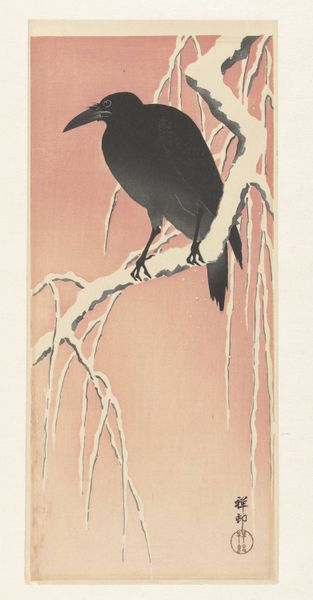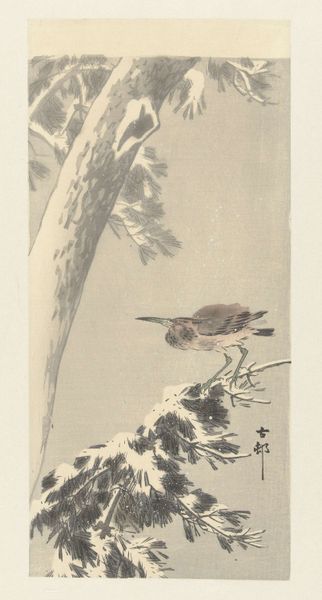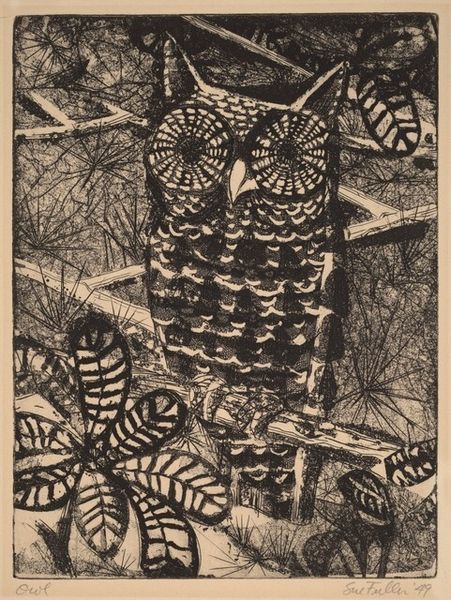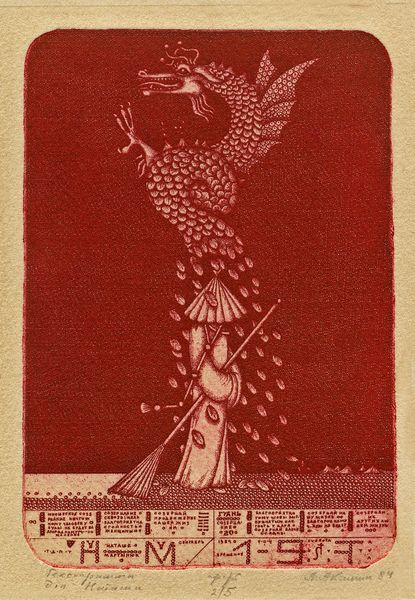
drawing, print, ink, engraving
#
drawing
#
pen drawing
# print
#
landscape
#
figuration
#
ink
#
line
#
engraving
Dimensions: image: 25.4 × 14.61 cm (10 × 5 3/4 in.) sheet: 29.53 × 17.3 cm (11 5/8 × 6 13/16 in.)
Copyright: National Gallery of Art: CC0 1.0
Curator: Right now we’re looking at a piece from 1932 titled "Morning Glory", by Lionel Lindsay. It’s an engraving, using both ink and pen to create this intricate print. Editor: My first thought? Serenity. It's almost like a little visual poem. That single peacock amidst all that flora, very evocative. Curator: Lindsay was known for his traditional approach, often drawing inspiration from earlier European masters. It’s interesting to see how he adopts this classical style to depict Australian flora and fauna. Editor: Exactly, there’s a touch of the exotic right next to something uniquely Australian. Look at how he uses line work. Each little scratch and swirl brings texture to the feathers and those climbing vines. The blooms look heavy, fragrant, and alive in all their glory, too. Curator: Engravings like these were widely circulated through art societies, influencing artistic tastes and shaping ideas of national identity, and allowing everyday citizens an accessible encounter with art. How do you interpret the symbolism? Editor: Well, a peacock often represents vanity and pride, but also immortality and beauty. Given the context and the title, "Morning Glory," I sense a celebration of nature's transient beauty, a reminder of our own fleeting moment. Curator: I agree that Lindsay prompts considerations of both the decorative, the beauty and design, and also a recognition of the socio-cultural context within which the piece emerges, demonstrating an important engagement of everyday citizens. Editor: A lovely, melancholic feeling hangs in the air for me... it speaks of things unfolding, changing, blossoming in unexpected places. Like life itself, really. Curator: Seeing Lindsay’s attention to these Australian ecosystems, perhaps he sought to cultivate greater public appreciation and pride for the wonders of the natural world, particularly given his role as president of the Australian Art Association, for instance. Editor: It leaves you feeling thoughtful, doesn’t it? I might try sketching a quick drawing later—of what's right in front of me. Curator: And for me, it drives an understanding of what cultural associations were at play for the artist in the making of this artwork, and why audiences were so receptive to this subject.
Comments
No comments
Be the first to comment and join the conversation on the ultimate creative platform.
